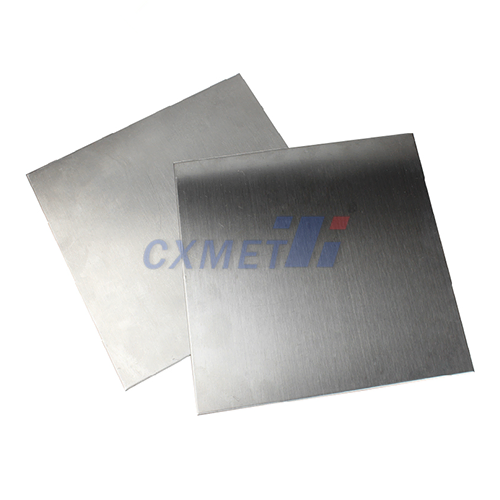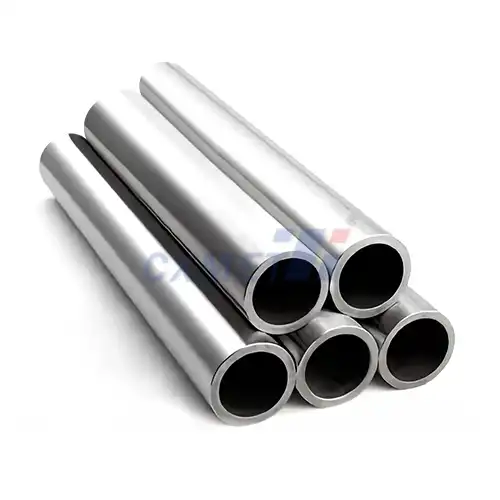- English
- French
- German
- Portuguese
- Spanish
- Russian
- Japanese
- Korean
- Arabic
- Greek
- German
- Turkish
- Italian
- Danish
- Romanian
- Indonesian
- Czech
- Afrikaans
- Swedish
- Polish
- Basque
- Catalan
- Esperanto
- Hindi
- Lao
- Albanian
- Amharic
- Armenian
- Azerbaijani
- Belarusian
- Bengali
- Bosnian
- Bulgarian
- Cebuano
- Chichewa
- Corsican
- Croatian
- Dutch
- Estonian
- Filipino
- Finnish
- Frisian
- Galician
- Georgian
- Gujarati
- Haitian
- Hausa
- Hawaiian
- Hebrew
- Hmong
- Hungarian
- Icelandic
- Igbo
- Javanese
- Kannada
- Kazakh
- Khmer
- Kurdish
- Kyrgyz
- Latin
- Latvian
- Lithuanian
- Luxembou..
- Macedonian
- Malagasy
- Malay
- Malayalam
- Maltese
- Maori
- Marathi
- Mongolian
- Burmese
- Nepali
- Norwegian
- Pashto
- Persian
- Punjabi
- Serbian
- Sesotho
- Sinhala
- Slovak
- Slovenian
- Somali
- Samoan
- Scots Gaelic
- Shona
- Sindhi
- Sundanese
- Swahili
- Tajik
- Tamil
- Telugu
- Thai
- Ukrainian
- Urdu
- Uzbek
- Vietnamese
- Welsh
- Xhosa
- Yiddish
- Yoruba
- Zulu
What are the Welding Characteristics of ASTM B861 Titanium Tubes?
ASTM B861 titanium tubes are widely used in various industries due to their exceptional properties, including high strength-to-weight ratio, excellent corrosion resistance, and biocompatibility. Understanding the welding characteristics of these tubes is crucial for engineers and fabricators to ensure proper joining and maintain the integrity of titanium structures. This blog post will delve into the welding characteristics of ASTM B861 titanium tubes, exploring the best practices, challenges, and considerations for achieving high-quality welds.
What are the best welding techniques for ASTM B861 titanium tubes?
When it comes to welding ASTM B861 titanium tubes, several techniques have proven effective, each with its own advantages and applications. The most commonly used methods include Gas Tungsten Arc Welding (GTAW), also known as TIG welding, and Electron Beam Welding (EBW).
Gas Tungsten Arc Welding (GTAW) is the preferred method for most titanium tube welding applications. This technique offers excellent control over the weld pool, allowing for precise and clean welds. GTAW is particularly suitable for thin-walled titanium tubes, as it minimizes the risk of burnthrough and distortion. When using GTAW for ASTM B861 titanium tubes, it's essential to maintain a clean and inert environment to prevent contamination. Argon is typically used as the shielding gas, with a flow rate of 15-20 cubic feet per hour (CFH) for most applications.
To achieve optimal results with GTAW, welders should use pure tungsten or 2% thoriated tungsten electrodes, as they provide better arc stability and longevity. The welding current should be set to DC electrode negative (DCEN), and a trailing shield or backing gas should be used to protect the weld root and heat-affected zone from oxidation.
Electron Beam Welding (EBW) is another technique that offers excellent results for ASTM B861 titanium tubes, especially for thick-walled sections or when deep penetration is required. EBW produces narrow, deep welds with minimal heat input, reducing distortion and the size of the heat-affected zone. This method is particularly advantageous for applications requiring high precision and repeatability.
However, EBW requires specialized equipment and a vacuum environment, making it less accessible and more expensive than GTAW. It's typically used in aerospace and medical device manufacturing, where the benefits of precise, high-quality welds justify the higher cost.
Regardless of the chosen technique, proper preparation of the titanium tubes is crucial. This includes thorough cleaning to remove any contaminants, oxides, or oils from the surface. A stainless steel wire brush dedicated solely to titanium should be used to avoid introducing foreign particles. Additionally, the joint design should be carefully considered to ensure proper fit-up and penetration.
How does the composition of ASTM B861 titanium tubes affect their weldability?
The composition of ASTM B861 titanium tubes plays a significant role in their weldability. ASTM B861 covers seamless titanium and titanium alloy tubes for general corrosion-resisting and heat exchanger applications. The standard includes several grades, each with a unique composition that affects its welding characteristics.
Grade 1 and Grade 2 titanium, which are unalloyed grades, are generally the easiest to weld. These grades have excellent ductility and formability, making them forgiving during the welding process. They are less prone to embrittlement and can tolerate slight variations in welding parameters without significant impact on weld quality.
Grade 3 and Grade 4 titanium, while still unalloyed, have higher oxygen content, which increases strength but slightly reduces ductility. This can make them more susceptible to embrittlement if proper welding procedures are not followed. Welders should pay extra attention to heat input and cooling rates when working with these grades.
Grade 5 titanium (Ti-6Al-4V), one of the most common alloys covered by ASTM B861, presents additional challenges due to its alloying elements. The presence of aluminum and vanadium increases the strength of the alloy but also makes it more sensitive to welding conditions. Grade 5 titanium is more prone to grain growth in the heat-affected zone, which can lead to reduced ductility and toughness if not properly controlled.
When welding Grade 5 titanium tubes, it's crucial to minimize heat input and use faster travel speeds to limit the extent of the heat-affected zone. Post-weld heat treatment may be necessary to optimize the mechanical properties of the welded joint.
The beta alloys, such as Grade 9 (Ti-3Al-2.5V), have their own set of considerations. These alloys are more prone to segregation during solidification, which can lead to variations in mechanical properties across the weld. Careful control of heat input and cooling rates is essential to maintain consistent properties throughout the welded joint.
Understanding the composition of the specific ASTM B861 titanium tube being welded is crucial for selecting the appropriate welding parameters, filler metals, and post-weld treatments. In all cases, maintaining a clean, inert environment during welding is paramount to prevent contamination and ensure the integrity of the weld.
What are the common challenges and solutions in welding ASTM B861 titanium tubes?
Welding ASTM B861 titanium tubes presents several challenges that must be addressed to achieve high-quality, reliable welds. Understanding these challenges and implementing appropriate solutions is essential for successful titanium tube welding.
One of the primary challenges in welding titanium tubes is contamination. Titanium is highly reactive at elevated temperatures and can readily absorb oxygen, nitrogen, and hydrogen from the atmosphere. This contamination can lead to embrittlement, reduced corrosion resistance, and compromised mechanical properties. To address this issue, welders must create and maintain an inert atmosphere around the weld area. This is typically achieved by using high-purity argon gas for shielding, with flow rates adjusted to provide complete coverage of the weld pool and surrounding areas.
In addition to gas shielding, welders should use trailing shields and backing gas to protect the weld root and heat-affected zone from oxidation. For complex geometries or internal welds, specialized purge systems may be necessary to ensure complete inert gas coverage. It's also crucial to clean the titanium surfaces thoroughly before welding, removing any oxides, oils, or contaminants that could compromise weld quality.
Another significant challenge is controlling heat input and preventing distortion, especially in thin-walled titanium tubes. Excessive heat input can lead to grain growth, reduced mechanical properties, and warping of the tube. To mitigate these issues, welders should use pulsed welding techniques, which allow for better control of heat input. Proper fixturing and clamping of the tubes during welding can also help minimize distortion.
Welders must also be mindful of the potential for arc wandering when welding titanium tubes. The low electrical conductivity of titanium can cause the arc to become unstable and wander, leading to inconsistent penetration and weld quality. Using a sharp electrode tip, maintaining a short arc length, and employing high-frequency arc starting can help stabilize the arc and improve weld consistency.
Porosity is another common issue in titanium welds, often caused by contamination or improper shielding gas coverage. To prevent porosity, welders should ensure proper gas flow rates, use high-purity shielding gases, and maintain clean welding surfaces. In some cases, using a slightly larger gas cup or custom gas lenses can improve shielding gas coverage and reduce the risk of porosity.
When welding dissimilar titanium grades or joining titanium to other metals, additional challenges arise due to differences in thermal properties and potential formation of brittle intermetallic compounds. In these cases, careful selection of filler metals and welding parameters is crucial. Transition joints or intermediate layers may be necessary when joining titanium to certain other metals.
Post-weld inspection and testing are essential to ensure the quality and integrity of titanium tube welds. Visual inspection can identify surface defects, while radiographic or ultrasonic testing can reveal internal flaws. For critical applications, mechanical testing and metallurgical examination may be necessary to verify the weld's properties and microstructure.
In conclusion, welding ASTM B861 titanium tubes requires a thorough understanding of the material's properties, careful preparation, and precise control of the welding process. By addressing the common challenges through proper techniques, equipment, and procedures, welders can achieve high-quality, reliable welds that maintain the exceptional properties of titanium tubes. As technology advances and new welding methods emerge, the ability to efficiently and effectively weld titanium tubes will continue to improve, expanding the possibilities for their use in various industries.
At SHAANXI CXMET TECHNOLOGY CO., LTD, we take pride in our extensive product range, which caters to diverse customer needs. Our company is equipped with outstanding production and processing capabilities, ensuring the high quality and precision of our products. We are committed to innovation and continuously strive to develop new products, keeping us at the forefront of our industry. With leading technological development capabilities, we are able to adapt and evolve in a rapidly changing market. Furthermore, we offer customized solutions to meet the specific requirements of our clients. If you are interested in our products or wish to learn more about the intricate details of our offerings, please do not hesitate to contact us at sales@cxmet.com. Our team is always ready to assist you.
References:
1. American Society for Testing and Materials. (2019). ASTM B861-19 Standard Specification for Titanium and Titanium Alloy Seamless Pipe.
2. Leyens, C., & Peters, M. (2003). Titanium and Titanium Alloys: Fundamentals and Applications. Wiley-VCH.
3. American Welding Society. (2020). AWS D1.9/D1.9M Structural Welding Code—Titanium.
4. Donachie, M. J. (2000). Titanium: A Technical Guide. ASM International.
5. Welding Technology Institute of Australia. (2018). Technical Note 22: Welding of Titanium and Titanium Alloys.
6. Lathabai, S., Jarvis, B. L., & Barton, K. J. (2001). Comparison of keyhole and conventional gas tungsten arc welds in commercially pure titanium. Materials Science and Engineering: A, 299(1-2), 81-93.
7. Short, A. B. (2009). Gas tungsten arc welding of α+ β titanium alloys: a review. Materials Science and Technology, 25(3), 309-324.
8. Peters, M., Kumpfert, J., Ward, C. H., & Leyens, C. (2003). Titanium alloys for aerospace applications. Advanced Engineering Materials, 5(6), 419-427.
9. Sokolov, M., Salminen, A., Kuznetsov, M., & Tsibulskiy, I. (2011). Laser welding and weld hardness analysis of thick section S355 structural steel. Materials & Design, 32(10), 5127-5131.
10. Balachandar, K., Janakiraman, V., & Zuhailawati, H. (2018). Electron beam welding of titanium alloy: process parameters, microstructure and mechanical properties. Materials Science and Technology, 34(6), 754-763.





